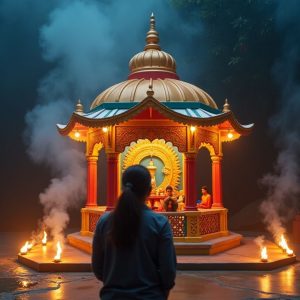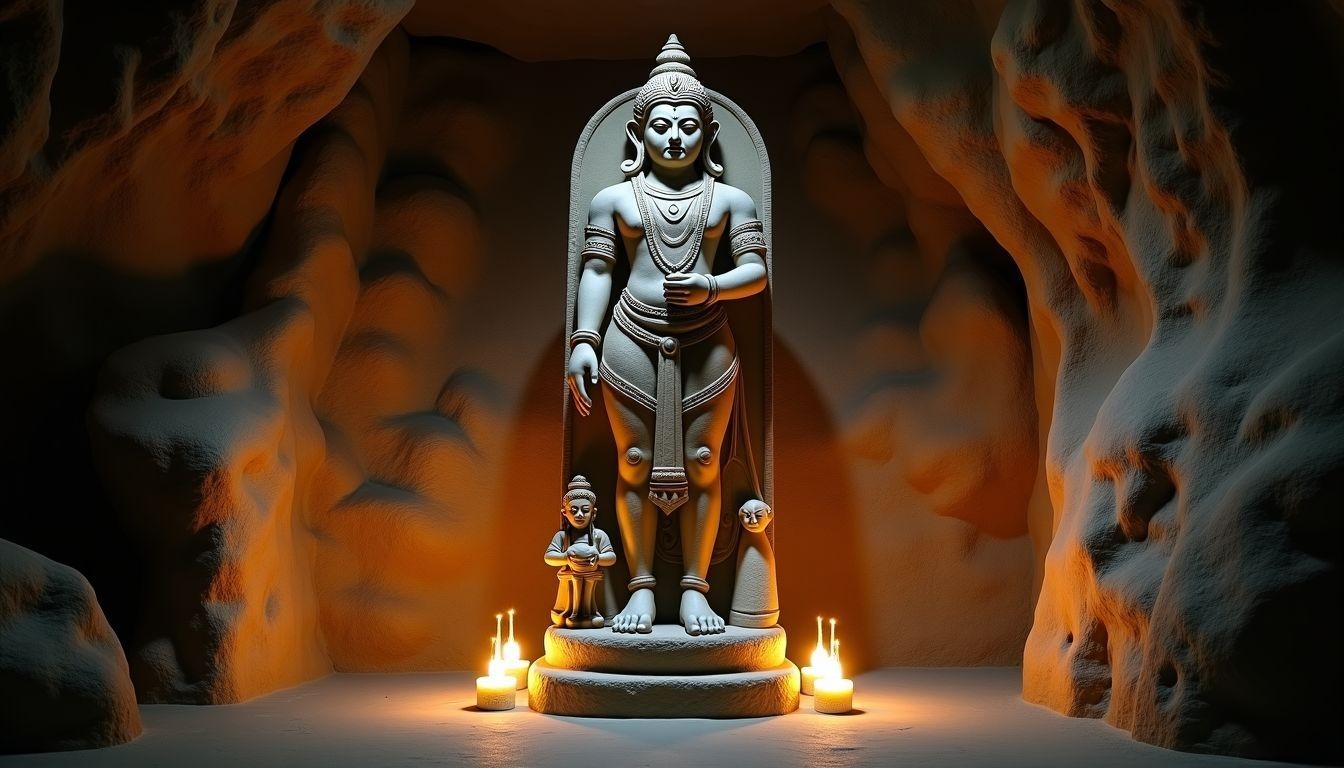Batu Caves is one of Malaysia’s most incredible landmarks, and it’s a place we love sharing with visitors. As a team of private tour providers here in Kuala Lumpur, we’ve seen the look of awe on people’s faces time and time again.
Located just north of Kuala Lumpur, this limestone hill holds a deep historical and cultural importance you can feel. It’s a sacred site for Hindus, a natural wonder, and a cultural icon all in one. A massive, golden statue of Lord Murugan, a Hindu deity, greets you at the entrance, standing as a powerful symbol of faith.
The caves truly come alive during the annual Thaipusam festival. Each year, hundreds of thousands of devotees and visitors gather to celebrate this vibrant and deeply moving event. Batu Caves is especially important to the Malaysian Tamil Hindu community, serving as a cornerstone of their spiritual and cultural identity.
This iconic place connects tradition with breathtaking natural beauty. Let’s explore its rich past and profound meaning together!
The Fascinating Historical Timeline of Batu Caves
Batu Caves has a rich past tied to faith, nature, and culture. Its journey from a hidden natural wonder to a world-famous sacred Hindu site is truly remarkable.
Discovery and Early History
While the indigenous Temuan people had long known about the caves, they were brought to wider attention in 1878. It was the American naturalist William Hornaday who documented the site.
K. Thamboosamy Pillai, an influential leader in the Tamil community, saw the caves’ potential for Hindu worship. He was inspired by the main cave’s entrance, which resembled the shape of a *vel*, Lord Murugan’s divine spear. In 1891, he dedicated the main cave, now known as the Temple Cave, as a shrine to Lord Murugan.
This act marked the beginning of its transformation into a cherished Hindu shrine.
Development as a Major Hindu Shrine
After its dedication, Batu Caves quickly grew in importance. The first wooden steps up to the Temple Cave were built in 1920 to make the pilgrimage easier.
These were later replaced by the 272 concrete steps you see today. The limestone hill now houses several shrines, including the Ramayana Cave, which tells the epic Hindu story with colorful statues. At the base, you can also find the Art Gallery Cave and Museum Cave, filled with more statues and paintings.
Pilgrims flock here year-round, especially during the Thaipusam festival, to honor Lord Murugan. The site truly became a global icon with the addition of the towering golden statue at its entrance.

Modern Renovations and Preservation
The Batu Caves you see today have evolved over the years. The stunning golden statue of Lord Murugan was unveiled in 2006 after three years of construction. It stands 42.7 meters tall, making it the tallest statue of Lord Murugan in the world.
In 2018, the 272 steps leading to the Temple Cave were painted in a vibrant rainbow of colors. This bold change quickly made the staircase an Instagram sensation and a must-have photo for visitors.
Efforts have also been made to preserve the site’s natural wonders. The Dark Cave, a separate cavern, is a protected area home to a unique ecosystem that includes fruit bats and the rare trapdoor spider, *Liphistius batuensis*.
Cultural and Religious Significance
Batu Caves plays a massive role in Malaysia’s cultural and religious life. It’s a place where faith and tradition bring people together in powerful ways.
The Centerpiece of the Thaipusam Festival
The Thaipusam Festival is an incredible spectacle that draws over a million Hindu devotees and curious travelers each year. It’s an annual celebration of Lord Murugan’s victory over the demon Soorapadman, which typically takes place in late January or early February.
The main event is a long procession that begins at the Sri Mahamariamman Temple in the center of Kuala Lumpur. Devotees walk for miles to reach the caves, many carrying offerings called “kavadis.” These are decorated frames, and some show their devotion through body piercings, a practice of penance and faith.
The towering golden statue of Lord Murugan welcomes the pilgrims at the end of their journey. The entire area buzzes with energy as the steps leading to the Temple Cave fill with music, chanting, and prayers.
It’s an unforgettable cultural experience that truly showcases the depth of devotion here.
A Pillar for the Tamil Hindu Community
Batu Caves is one of the most significant Hindu shrines outside of India. It stands as a vital spiritual center for Tamil Hindus in Malaysia, whose ancestors often came to the country generations ago.
The site is home to several Hindu shrines and temples, most importantly the main temple dedicated to Lord Murugan. This limestone hill is a powerful symbol of their spiritual roots and vibrant culture.
Many Tamil families make an annual pilgrimage here, passing down their traditions to their children. The Thaipusam festival, in particular, strengthens community bonds and showcases their deep faith and unity.
Batu Caves keeps Tamil Hindu heritage vibrant and alive while welcoming everyone to learn about its religious role.
Conclusion
Batu Caves is so much more than just a famous tourist spot. It’s a place alive with history, culture, and deep spiritual meaning.
From the breathtaking golden statue of Lord Murugan to the sacred Hindu temples nestled within ancient limestone, every corner has a story to tell. Here, you can feel the powerful spirit of devotion while admiring incredible natural beauty.
It’s truly a place that leaves a lasting impression on everyone who visits.



Comment (0)